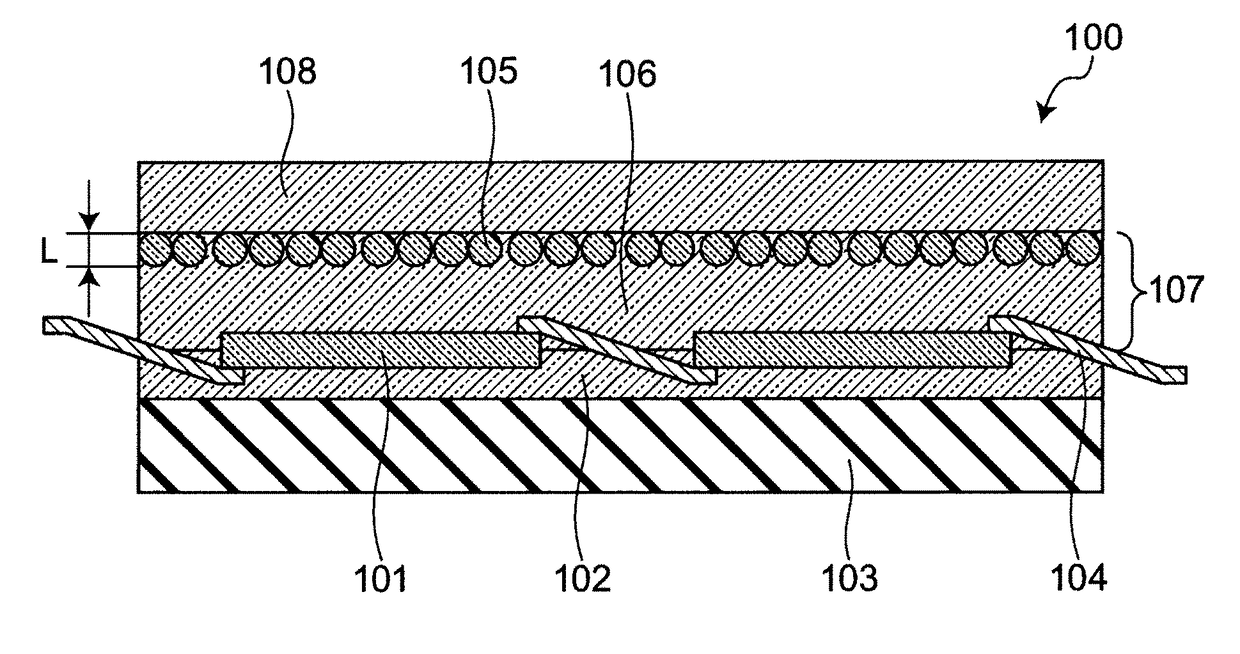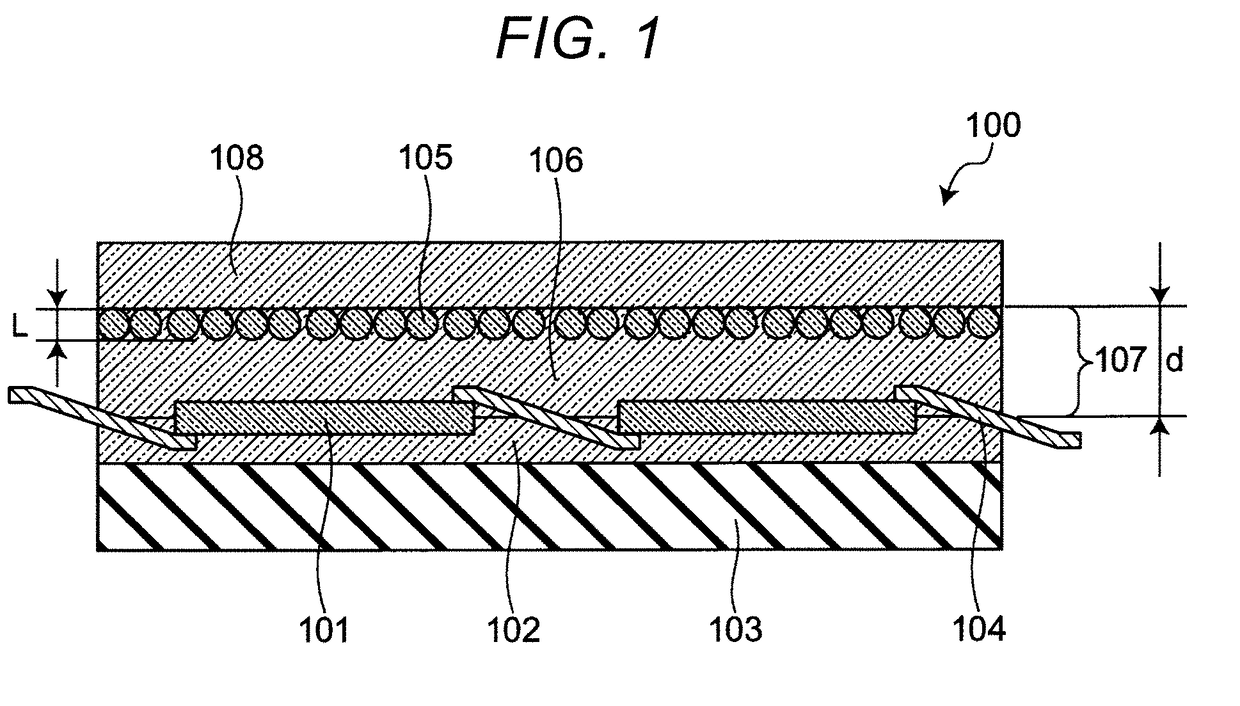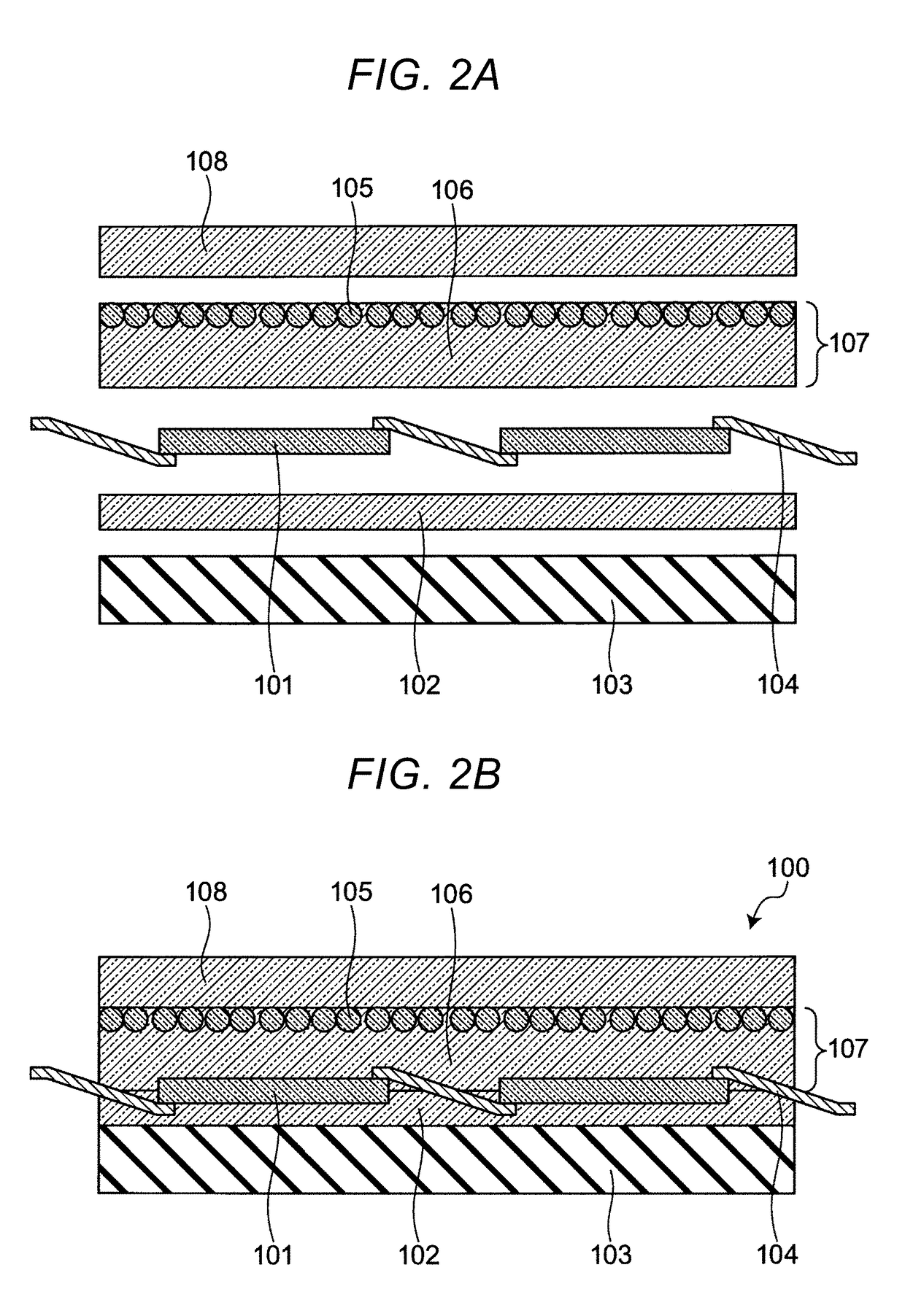Solar cell module and method of manufacture thereof
a solar cell and module technology, applied in the field of solar cell modules, can solve the problems of low sensitivity of solar cell modules in shorter wavelength regions, inability to make effective use of shorter wavelength light, and insufficient quantity of ultraviolet light by phosphor alone, and achieve high efficiency
- Summary
- Abstract
- Description
- Claims
- Application Information
AI Technical Summary
Benefits of technology
Problems solved by technology
Method used
Image
Examples
first embodiment
[0054]FIG. 1 is a cross sectional view illustrating a cross sectional structure of a solar cell module 100 according to First Embodiment. The solar cell module 100 according to the present First Embodiment includes at least a photoelectric conversion device 101, a first encapsulant layer 102, a back sheet 103, an electrode 104, a second encapsulant layer 107, and a protective glass 108. The solar cell module 100 is structured so that the back sheet 103, the first encapsulant layer 102, the photoelectric conversion device 101, the second encapsulant layer 107, and the protective glass 108 are stacked in this order. The first encapsulant layer 102 is formed of a transparent resin provided on the back of the photoelectric conversion device 101 for protection. The photoelectric conversion device is electrically connected to the electrode 104. The second encapsulant layer 107 is a sheet configured from a resin containing a UV absorber. Specifically, the solar cell module 100 has a struct...
example 1
[0092]Example 1 represents an example in which a solar cell module for evaluation was produced according manufacturing method A. As the phosphor, a silica phosphor that had been formed by sintering was used after fine phosphor particles having an Eu2+ emission center were embedded in porous portions of a porous silica filler. The silica phosphor had an average particle size of 1.0 μm. For the production of the UV absorber layer, 1 g of benzophenone UV absorber 2,4-dihydroxybenzophenone was added to 200 g of a low-density polyethylene resin, and mixed at 100 rpm for about 30 minutes in a planetary mixer that had been heated to 150° C. The mixture was then pressed with a heat press that had been heated to 150° C., after adjusting the gap with a 550-μm stainless steel spacer. This was followed by cooling to obtain the UV absorber layer. Thereafter, the silica phosphor was applied to one surface of the UV absorber layer in an amount of about 300 μg per 1 cm2, using a brush, and the UV a...
examples 2 to 8
[0093]Example 2 is the same as Example 1, except that the silica phosphor had an average particle size of 50 μm, and the phosphor concentrated region had a thickness of 50 μm.
[0094]Example 3 is the same as Example 1, except that the silica phosphor had an average particle size of 0.05 μm, and the phosphor concentrated region had a thickness of 0.05 μm.
[0095]Example 4 is the same as Example 1, except that the silica phosphor had an average particle size of 50 μm, the phosphor was repeatedly applied and embedded in the UV absorber layer 5 times, the phosphor concentrated region had a thickness of 250 μm, and the UV absorber layer had a thickness of 1,000 μm.
[0096]Example 5 is the same as Example 1, except that manufacturing method B was used. The method did not allow for measurement of transmittance at 370 nm. However, the measured value of Example 1 was used because the configuration was the same.
[0097]Example 6 is the same as Example 1, except that the phosphor is an inorganic phosp...
PUM
 Login to View More
Login to View More Abstract
Description
Claims
Application Information
 Login to View More
Login to View More - R&D
- Intellectual Property
- Life Sciences
- Materials
- Tech Scout
- Unparalleled Data Quality
- Higher Quality Content
- 60% Fewer Hallucinations
Browse by: Latest US Patents, China's latest patents, Technical Efficacy Thesaurus, Application Domain, Technology Topic, Popular Technical Reports.
© 2025 PatSnap. All rights reserved.Legal|Privacy policy|Modern Slavery Act Transparency Statement|Sitemap|About US| Contact US: help@patsnap.com



